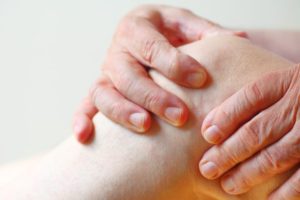 About Knee Bursitis
About Knee Bursitis
Knee bursitis affects the bursa in the knee, the small sac of fluid near the knee joint. There are several of these bursae throughout the knee that help to reduce friction between the bones and the tendons by adding a cushion. Knee bursitis occurs when the bursa becomes inflamed, causing pain and potentially limiting mobility.
Medications can be used to reduce the pain and inflammation, but there are also self-care practices that can help to limit the symptoms of knee bursitis, including exercises.
Exercises for Knee Bursitis
Heel Slide
Advertisement
For this exercise, you will need to lie on your back. The knee experiencing the bursitis should remain straight, with the other one bent. Begin bending your affect knee by sliding your heel along the ground toward your bum. Bend the knee to a comfortable degree, hold it for approximately six seconds, and then slowly straighten it again by sliding your heel across the floor in the opposite direction. This exercise can be repeated in sets of 8 or 12.
Quad sets
You will need to use a towel or cloth to perform this exercise. To begin, sit on the floor with your bursitis knee relaxed. You can keep your other knee bent or straight, to your comfort. Roll the cloth up and tuck it under your affected knee. Using your thigh muscle to press the back of your knee into the cloth. Hold it for around 6 seconds with a 10-second break in between reps. Repeat in sets of 8 or 12.
Straight-leg raises to the front
Begin this exercise by lying flat on your back. Bend your good knee to a comfortable angle, with your foot resting flat on the floor. Keep the leg with the bursitis straight and slowly lift it off the floor to a height of about 30 cm. Hold it up for about 6 seconds and then slowly lower it to rest on the floor. Rest for 10 seconds between reps and repeat in sets of 8 or 12.
Hamstring stretch on wall
This exercise requires an open doorway that you can lie within. Lie down on your back with your good leg stretched out straight through the doorway. Use the wall on the other side of the door by lifting your bursitis leg and resting it against the wall. You should be making a 90-degree angle with your legs and you should feel a stretch in the hamstring on your injured leg. Hold the leg up against the wall between 15 and 30 seconds then slowly lower it down, adjusting your body as necessary. Repeat in sets of 3.
Standing calf stretch
You will need to stand facing a wall for this exercise. Place your hands on the wall at eye level. Keep your bursitis leg planted, slightly behind you, with your good leg bent slightly in front. Lean into the wall, balancing on your hands, until you feel a stretch in the calf of your bursitis knee. Hold for 15-30 seconds and repeat 3 times in each set.
Quadriceps stretch
While standing, grasp the heel on your injured leg and pull it toward your bum. Maintain your balance as best you can and lean against a wall if you need to. Hold for 15-30 seconds before switching legs, performing 3 reps on each leg per set.
Side-lying leg lift
Advertisement
Lie down on your uninjured side and lift your injured leg straight up between 8 and 10 inches from the other leg. Hold it for a few seconds before slowly lowering it down on top of the other leg, keeping it straight all the while. This exercise should be done in sets of 15.
Wall squat with a ball
Stand with your back to a wall and place a ball behind your back, balancing it by holding it against the wall with your back. Slowly roll the ball down the wall until you are performing a 45-degree angle squat. Hold for 10 seconds before returning to a standing position. Perform in sets of 15.
Also Read:
- 16 best exercises to overcome arthritic knee problems
- Bone Spur in Knee: Causes, Symptoms, and Treatment
